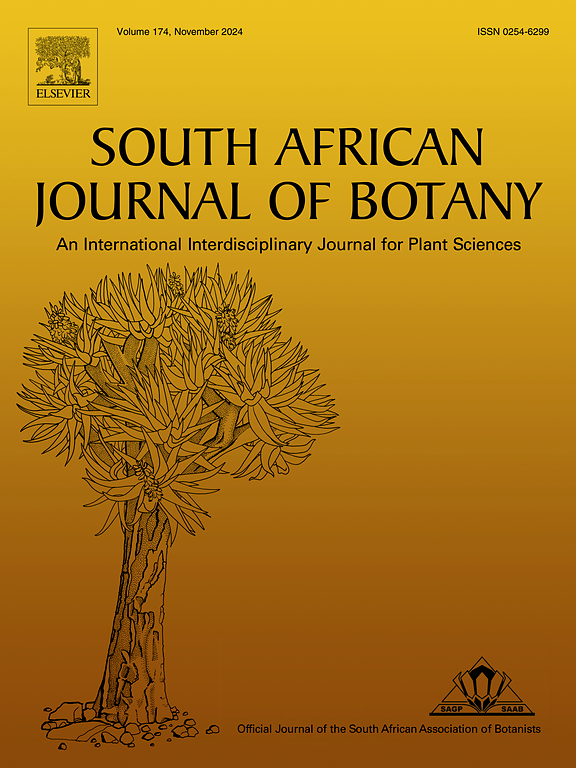对南非抗菌植物的评估及其针对金黄色葡萄球菌青霉素结合蛋白 2a 和 beta-内酰胺酶的潜在线索的计算生物研究
IF 2.7
3区 生物学
Q2 PLANT SCIENCES
引用次数: 0
摘要
本文章由计算机程序翻译,如有差异,请以英文原文为准。
An appraisal of the South African antibacterial plants and their computational bioprospection for putative leads against Staphylococcus aureus penicillin-binding protein 2a and beta-lactamase
The penicillin-binding protein (PBP) 2a and beta-lactamase play important roles in the resistance of Staphylococcus aureus to beta-lactam antibiotics, making them vital targets for the discovery of new chemical entities. The vast South African medicinal plants (SAMP) with reported antibacterial properties have not been sufficiently explored to date. This study explored SAMP with reported antibacterial activities for putative leads against S. aureus PBP2a and beta-lactamase using computational studies. A total of 187 SAMPs with antibacterial activity were identified, spanning 67 families, with Fabaceae (18), Asteraceae (19), and Lamiaceae (11) being the most prominently represented. A library of 4230 secondary metabolites (SM), predominantly identified from leaves of the plants, was constructed and docked against active site of S. aureus PBP2a. The top-ranked SM were further docked to the allosteric site of S. aureus PBP2a, beta-lactamase and their ensembles obtained from conformational clustering and investigated for druggable pharmacokinetic and synthetic features. Thermodynamic stability analysis of the resulting complexes of the leads over a 120-ns MD simulation period revealed astragalin 6′’-gallate (-62.11 ± 4.94 and -39.70 ± 4.91 kcal/mol) and 20(29)-Lupene-3β-Isoferulate (-55.66 ± 8.91 and -42.88 ± 5.93 kcal/mol) as the most potent against S. aureus PBP2a and beta-lactamase compared to reference standards, ceftaroline (-46.06 ± 5.65 kcal/mol) and clavulanate (-21.40 ± 4.77 kcal/mol), respectively, with an allosteric modulatory effect on Tyr446, the active site gatekeeper residue in S. aureus PBP2a. Astragalin 6′'-gallate and 20(29)-lupene-3β-isoferulate, identified in Myrothamnus flabellifolia and Euclea natalensis, respectively, are likely contributors to the reported antibacterial activity of these plants. The potential dual-target inhibitory properties and the ability to modulate the active site conformation of S. aureus PBP2a position these metabolites as promising candidates for further investigation in combating S. aureus infections. Efforts are underway in this direction.
求助全文
通过发布文献求助,成功后即可免费获取论文全文。
去求助
来源期刊

South African Journal of Botany
生物-植物科学
CiteScore
5.20
自引率
9.70%
发文量
709
审稿时长
61 days
期刊介绍:
The South African Journal of Botany publishes original papers that deal with the classification, biodiversity, morphology, physiology, molecular biology, ecology, biotechnology, ethnobotany and other botanically related aspects of species that are of importance to southern Africa. Manuscripts dealing with significant new findings on other species of the world and general botanical principles will also be considered and are encouraged.
 求助内容:
求助内容: 应助结果提醒方式:
应助结果提醒方式:


